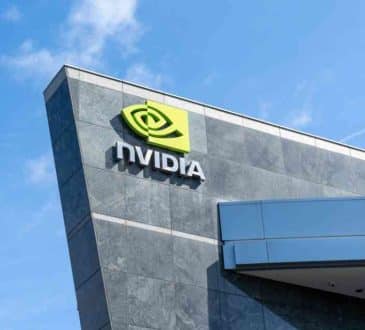Standard Unit Costs

Standard prices of the working-units of tangible fixed assets are, amongst other quantities, required input data in order to establish minimum product prices. However, this important data is not calculated exactly, but – if calculated in conformity with outdated textbooks in use worldwide – is consistently too low. In practice one often estimates, rather than calculates, economic life cycles of tangible fixed assets and indeed estimates the standard prices of the working-units as well. On second thoughts true enough, because the existing old algorithm turns out to be inadequate. A new algorithm is now available, enabling calculation of the economic life cycle exactly. Integral calculation schemes – assessing strategic investments from start to finish – are at anyone’s disposal and easy to execute, not just in big organisations with impressive staffing but also in small and medium-sized undertakings. Anyone can learn to put these schemes to one’s good use. All can be understood easily.
It is possible to jump over from NPV-calculations to P/L-accounts. Further readings on the topic interaction between DCF (Discounted Cash Flow) and resulting accounts, re my free downloadable paper entitled ‘A Trinity: DCF, P/L-accounts & Shareholder Value’ http://ssrn.com/abstract=864444
If s (selling price) = SUC (Standard Unit Cost), one would expect a final outcome that is equal to zero, but on second thoughts this appears to be definitely not true; check the NPV calculation, if not based on s but on SUC instead. The latter SUCs (of the products) is the addition sum of a lot of machine SUCs amongst other costs as well. Machine SUCs (1 machine hour) is basic data, alike 1 hour labor, 1 kg raw material, etcetera. It is obvious that something is missing within the reckoning. Also the belonging fiscal accounts indicate that besides complementary costs, depreciations and capital costs, there is still another burden to cope with. The old calculus are ending up structurally too low, all along the line. Also the economic life cycles appear to be different (old versus new) in some instances. The found variances are quite significant and rather frightening. A minimum tax burden for each and every period must be incorporated at all relevant places within the one and only exact economic life cycle algorithm. Moreover, tax rate and the fiscal depreciation scheme appear to be necessary input data in order to calculate the economic life cycle in conjunction with the standard price of the working-units involved (being required input data in order to establish minimum product prices), or equivalently both data also (besides the usual cost data) establish the mentioned outcomes; indeed, just bare cost accounting is not enough.
NPV-calculations, exclusive of SVD i.e. Substantial Value Difference, in particular SVD specific, are incomplete and traditional accounts suffer from a lack of proof. Inclusive SVD right from the start, one can calculate more realistic economic life cycles, better standard unit-costs, proven period profits and the all-embracing NVAs both for each and every period and altogether at the point of no return. Re ‘Neither EVA® nor CVA®, but NVA’ http://ssrn.com/abstract=366561. NVA is the Alpha and Omega of VBM (Value Based Management). The NPV/IRR-method (including the models which are based on it, for instance the CVA® concept) neglects substantialism. It is not either-or, but both-and: nominalism and substantialism. Difficult? On the contrary. It has been made difficult by cutting the whole to pieces and because of that at the end, business economics (traditional accounting) does not offer any solutions. Depreciation methods generate columns of artificial book values – too good to be true – and the different profit calculation systems are mutually exclusive, re https://ceoworld.biz/2020/06/15/period-profit-measurement-new-formula/
For more about the mentioned NEW algorithm, re my free downloadable paper ‘The Very Costs of Tangible Fixed Assets’ http://ssrn.com/abstract=886902, dated 2006, and this NEW algorithm is also presented in ISBN 9781086355635 available at www.amazon.com
Here the content of the book is given:
I am independent researcher Business Economics and inventor of The Profit Formula®: The Way to Easy Profit Measurement. I have more than 20 years of experience as a lecturer in Business Economics, and I have always been critical of what was in many textbooks. My book goes beyond the borders of set science, and rewrites large tracts of Business Economics as it is currently badly taught worldwide.
Business Economics is a training course of making sums.
No. 2 from the triptych Exercises, Problems, Questions is for everyone the ultimate test
No. 3 from the triptych Elaborations, Answers gives everyone the ultimate solution:
One must cope with the whole relevant reality and all simultaneously. Beyond the point of no return, whereas an ongoing investment is the case at hand, cash flows alone are not decisive. There is much more, since balance sheets, profit and loss accounts, and many other factors have to be taken into account, altogether these are a flight plan. Next it becomes a matter of careful monitoring. The calculated economic life cycle and all resulting calculations are subject to the dynamics of business. At any point in time management opinion on product life cycles will change, thus the expected useful life of assets will vary over time. As soon as one piece of data changes, all calculations should be thrown away. On the basis of the new set of data, new calculations must be made. Management is in continuous need of up to date financial accounts, which are clear and complete, speak for themselves, contain proven numbers, and unravel the future. These ex ante accounts are signposts on the road to the future. Walking down the road, ex post accounts are made regarding past time periods and new data will generate new signposts for the road ahead.
Commentary by Jan Jacobs.
Add CEOWORLD magazine to your Google News feed.
Follow CEOWORLD magazine headlines on: Google News, LinkedIn, Twitter, and Facebook.
This report/news/ranking/statistics has been prepared only for general guidance on matters of interest and does not constitute professional advice. You should not act upon the information contained in this publication without obtaining specific professional advice. No representation or warranty (express or implied) is given as to the accuracy or completeness of the information contained in this publication, and, to the extent permitted by law, CEOWORLD magazine does not accept or assume any liability, responsibility or duty of care for any consequences of you or anyone else acting, or refraining to act, in reliance on the information contained in this publication or for any decision based on it.
Copyright 2024 The CEOWORLD magazine. All rights reserved. This material (and any extract from it) must not be copied, redistributed or placed on any website, without CEOWORLD magazine' prior written consent. For media queries, please contact: info@ceoworld.biz
SUBSCRIBE NEWSLETTER








